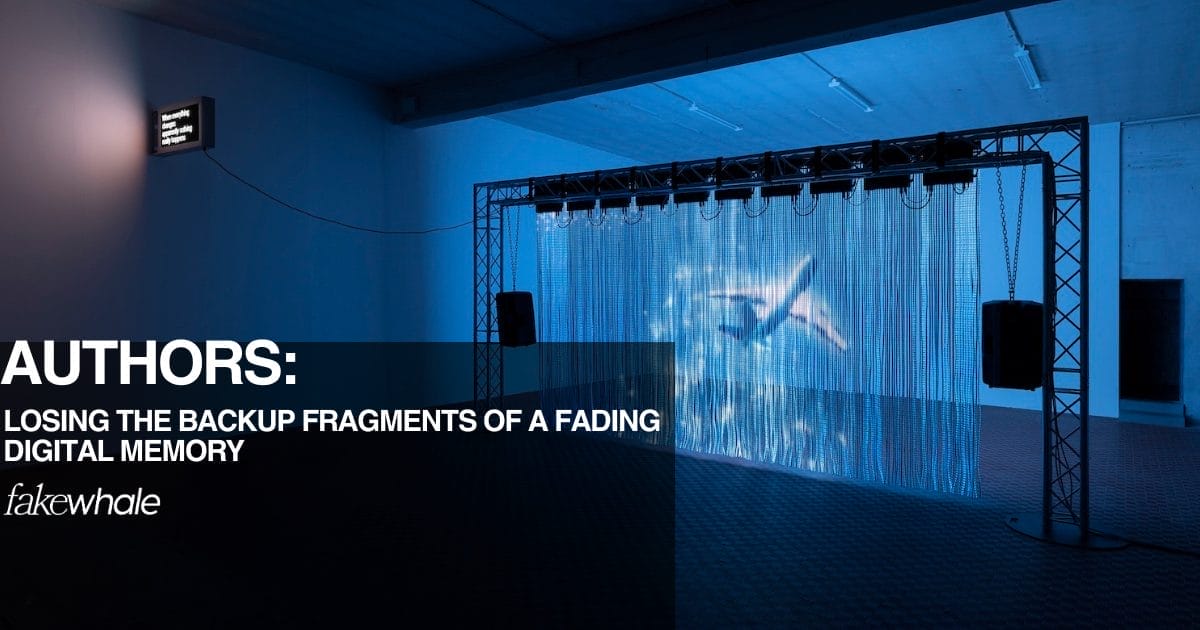In this issue, we’re pleased to feature an in-depth article by Fakewhale author, Matteo Giovanelli, expanding on a theme our editorial team has recently brought to the forefront.
To understand what LOWTECH Art tendency is and what we are facing in art galleries and online platform in these decades, it’s important to take a step back into the art history, rewind the film, and try to comprehend the process that led us to this specific moment in contemporary art, where technology is constantly present, even when the artwork is something as traditional as a painting, since it is photographed and presented online, such as in blog posts or installation views.
“CTRL+Z” is the perfect metaphor for this journey into the past. Every day, with our keyboard, we “undo” errors and mistakes, removing an action to return to the original form. In an age in which the possibility to delete its so easy that even culture and tragedies can be erased or denied, by using this tool, we can delve into the foundational aspects of this movement in contemporary art.
According to Fakewhale’s recent introduction of the term, LOWTECH is «a practice that reframes technology not as a symbol of linear progress but as a space for questioning and redefining sculptural language» , which means that it’s not merely the metaphor of progress and innovation, but a tool of self-referential analysis that «emphasizes a sense of transience in their ‘function’, suspended between the operative and the dysfunctional, between a sudden inversion of their intended use and the space they open up for new meaning, where the limits and wonders of technology become a space for critical reflection and creative reinvention».

Franco e Eva Mattes, Human-in-the-loop, Nassauischer Kunstverein
It was after the Second World War in fact, that the relationship between art and technology became increasingly strong and supported. In the 1960s, this connection was not only championed by the artist but also through institutional exhibitions, critics and technology itself, all contributing to emergence of a new trend based on the use of technology in and as art.

Jean Tinguely & Billy Klüver, Fragment of Homage to New York - a self-contructing and self-destroying work of art, 1960 @ MoMA
This tendency is far from being “new”, and actually is rooted in the historical junction of Avant-Gardes that are as well rooted in the evolution of means like photography or cinema through the 19th century, during the industrial revolution. But let’s proceed in order. In collaboration with artist Robert Rauschenberg, engineer Billy Klüver founded the group Experiments in Art and Technology (E.A.T.) to promote the fusion of art and technology. This initiative was rooted in their previous partnership on the 1966 project Oracle and was preceded by their extraordinary collaboration with Jean Tinguely between 1962 and 1965 on Homage to New York, a self-constructing and self-destructive artwork. In the meantime, major institutions like the MoMA or the Jewish Museum in New York, but also the Institute of Contemporary Art in London, hosted incredible exhibitions that promoted this dynamic fusion.(…)

Cory Arcangel, Super Mario Clouds, 2002. Whitney Museum of American Art, New York; purchase, with funds from the Painting and Sculpture Committee.
READ NOW ↓
AUTHORS

Authors' Insights explores experimental practices spanning sculpture, installation, video art, and transdisciplinary research. As part of the Fakewhale LOG, it provides writers, curators, and art professionals a platform to exchange perspectives, driving deeper engagement with contemporary critical discourse.
LATEST ARTICLES BY THE AUTHORS ↓
Are you a writer, curator, or art professional? Do you have a unique perspective to share or a critical reflection that could enrich the contemporary debate? Fakewhale invites you to contribute to the new “Authors Insights” section. Reach out at [email protected]
FAKEWHALE GALLERY
Fakewhale Gallery Presents cornell_Box by Andy Duboc on Verse
On April 16th, 2025, Fakewhale presents “cornell_Box,” a Fakewhale Gallery generative art release by Andy Duboc on Verse.

cornell_Box, Andy Duboc, Installation View, Fakewhale x Verse, April 2025
Developed in custom Javascript and WebGL, cornell_Box reframes the screen as a site of spatial inquiry through abstract, real-time animations. Drawing from a lineage of light-based practice including Leo Villareal’s systemic logic, James Turrell’s chromatic immersion, and Sean Hogan’s generative elegance, Duboc transposes their physical strategies into computational language. Within a simulated reflective environment, emissive lines shift gradually in color, activating a layered architecture of light and space that unfolds in real time. The result is technically precise, conceptually grounded, and restrained in visual language, yet expansive in perceptual depth.

cornell_Box, Andy Duboc, Installation View, Fakewhale x Verse, April 2025
USEFUL LINKS:





